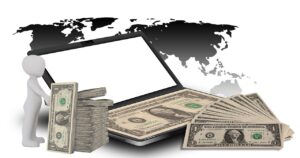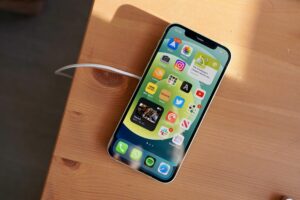Digital Twin: Unlocking the Power of Virtual Representations – The digital twin is a revolutionary concept that has been gaining significant attention across industries. It offers a virtual replica of physical objects, processes, or systems, enabling real-time monitoring, analysis, and simulation. In this article, we will explore the world of digital twin technology, its working principles, applications, benefits, challenges, future trends, and more.
Digital Twin: Unlocking the Power of Virtual Representations / Digital Twin: Unlocking the Power of Virtual Representations / Digital Twin: Unlocking the Power of Virtual Representations
Introduction
The concept of a digital twin involves creating a digital representation of a physical entity, such as a machine, product, or even an entire city. It captures both the physical and behavioral aspects, allowing organizations to gain deeper insights, optimize performance, and make informed decisions. Digital twins are transforming industries and driving innovation in various domains, including manufacturing, healthcare, and infrastructure development.
How Digital Twin Works
Digital twin technology relies on a combination of data collection, integration, and real-time synchronization. First, relevant data is collected from sensors, IoT devices, and other sources, capturing the behavior, condition, and performance of the physical object. This data is then integrated into a virtual model, which is continuously updated to mirror the real-world entity. Through real-time synchronization, the digital twin remains a faithful representation of the physical object, providing a reliable source of information for analysis and simulation.
Analytics and simulation play a crucial role in the functioning of digital twins. By applying advanced algorithms and machine learning techniques, organizations can derive actionable insights from the data collected by the digital twin. They can simulate different scenarios, perform predictive analysis, and optimize processes to improve efficiency and performance.
Applications of Digital Twin
The applications of digital twin technology are vast and diverse. Let’s explore a few notable examples:
Manufacturing and Industrial Processes
Digital twins are revolutionizing the manufacturing industry by enabling predictive maintenance, optimizing production lines, and reducing downtime. Manufacturers can create digital twins of machines and production systems to monitor their performance, identify potential issues, and schedule maintenance activities proactively. This approach helps in minimizing disruptions, maximizing productivity, and reducing costs.
Smart Cities and Infrastructure
In the context of smart cities, digital twins can be used to monitor and manage various aspects, including traffic flow, energy consumption, and waste management. By creating digital replicas of urban environments, city planners and infrastructure managers can analyze data in real-time, identify bottlenecks, and optimize resource allocation. This data-driven approach contributes to sustainable development, improved services, and enhanced quality of life for citizens.
Healthcare and Medical Applications
Digital twin technology is making significant contributions to the healthcare sector. It allows the creation of personalized virtual models of patients, which can be used for diagnosis, treatment planning, and monitoring. Physicians can simulate different treatment options, predict outcomes, and optimize therapies for individual patients. Digital twins also enable remote monitoring of patients, facilitating telemedicine and improving access to healthcare services.
Benefits of Digital Twin
The adoption of digital twin technology brings several benefits to organizations across industries. Some key advantages include:
Improved Efficiency and Productivity
By leveraging real-time data and advanced analytics, digital twins help organizations identify inefficiencies, optimize processes, and enhance overall efficiency and productivity. They enable proactive maintenance, reducing unplanned downtime and extending the lifespan of assets. With accurate insights and simulations, organizations can make informed decisions, streamline operations, and drive continuous improvement.
Predictive Maintenance
Digital twins play a crucial role in predictive maintenance strategies. By monitoring the behavior and performance of physical assets, organizations can detect anomalies, predict failures, and schedule maintenance activities before critical issues arise. This proactive approach minimizes downtime, reduces maintenance costs, and improves asset reliability.
Enhanced Decision-making
Digital twins provide decision-makers with a comprehensive and real-time view of the physical entity they represent. This visibility enables data-driven decision-making, as it facilitates accurate monitoring, analysis, and prediction. Decision-makers can test different scenarios, evaluate the impact of potential changes, and make informed choices to drive business success.
Challenges and Limitations of Digital Twin
While digital twin technology offers immense potential, it also comes with several challenges and limitations that need to be addressed:
Data Privacy and Security Concerns
Digital twins rely on vast amounts of data collected from various sources. Ensuring the privacy and security of this data is crucial to maintain trust and protect sensitive information. Organizations must implement robust data encryption, access controls, and compliance measures to mitigate potential risks.
Scalability and Complexity
Developing and managing digital twins for complex systems can be challenging. As the complexity and scale of the physical entity increase, so does the complexity of the digital twin. Organizations need to invest in scalable infrastructure, advanced analytics capabilities, and skilled personnel to effectively handle large-scale digital twin implementations.
Cost and Implementation Challenges
Implementing digital twin technology involves significant investments in infrastructure, software, and skilled resources. Organizations need to carefully evaluate the costs and benefits associated with developing and maintaining digital twins. Additionally, integrating digital twins with existing systems and processes requires careful planning and coordination.
Future Trends and Developments
The future of digital twin technology holds exciting possibilities. Here are some trends and developments to watch out for:
Integration with Emerging Technologies
Digital twins are likely to integrate with other emerging technologies, such as artificial intelligence, machine learning, and augmented reality. This integration will enhance the capabilities of digital twins, enabling more accurate predictions, advanced simulations, and immersive user experiences.
Expansion Across Industries
While digital twin technology has already made an impact in sectors like manufacturing and healthcare, its potential extends to various other industries. As organizations recognize the value of digital twins, we can expect to see increased adoption in areas like transportation, agriculture, energy, and more.
Impact on the Internet of Things (IoT) and Artificial Intelligence (AI)
Digital twins are closely linked to IoT and AI. As the number of connected devices and the amount of data generated continues to grow, digital twins will play a critical role in harnessing and leveraging this data. They will provide valuable insights for optimizing IoT deployments and enabling AI-driven decision-making.
Conclusion
Digital twin technology has the potential to revolutionize industries by bridging the gap between the physical and virtual worlds. By creating virtual replicas of physical entities, organizations can gain valuable insights, optimize processes, and make informed decisions. However, the adoption of digital twin technology comes with its own set of challenges, including data privacy, scalability, and implementation costs. As technology continues to advance and organizations embrace digital transformation, digital twins will play a pivotal role in driving innovation and improving operational efficiency.
FAQs
- What is the difference between a digital twin and a physical model?
- A digital twin is a virtual replica of a physical object or system that provides real-time synchronization and data-driven insights. While physical models are physical representations, digital twins incorporate data integration, analytics, and simulation capabilities.
- Can digital twin technology be used in the consumer electronics industry?
- Yes, digital twin technology can be applied to the consumer electronics industry. It can be used to create virtual representations of products, monitor their performance, and provide personalized recommendations for users.
- Are there any ethical concerns related to digital twin technology?
- Yes, there are ethical concerns surrounding digital twin technology, particularly regarding data privacy and security. Organizations must ensure that personal data collected by digital twins is protected and used responsibly.
- How long does it take to develop a digital twin for a complex system?
- The development time for a digital twin depends on various factors, including the complexity of the system, the availability of data, and the resources allocated to the project. Developing a digital twin for a complex system may take several months or even years.
- What are some examples of successful implementations of digital twin technology?
- There are several successful implementations of digital twin technology across industries. For example, General Electric (GE) has used digital twins to optimize the performance of gas turbines, leading to improved efficiency and reduced maintenance costs. In healthcare, digital twins have been used to create personalized treatment plans for patients with complex medical conditions.



